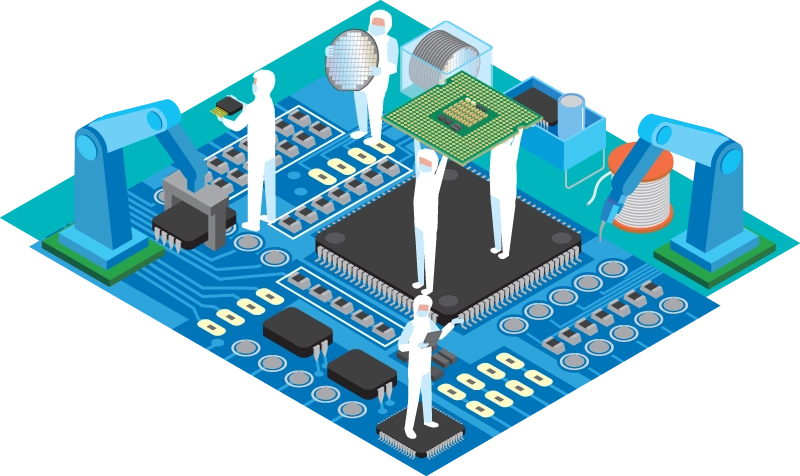After more than two decades, the world of cleanrooms just received a major refresh with the release of ISO 14644-5:2025. If you manage, audit, or simply work in controlled environments, this is a big moment that could shape your daily procedures for years to come. Let’s explore what changed, why it matters, and how you can confidently move toward compliance with this new standard.
Why the Update, and Why Now?
ISO 14644-5 has long served as the “how-to guide” for the operation of cleanrooms and controlled environments, complementing the well-known ISO 14644-1 and -2, which address classification and monitoring of airborne particle cleanliness. While those familiar particle count thresholds didn’t shift in this update, the operational backbone did… the practices, programs, and documentation required to keep cleanrooms running smoothly.
So why now? Advances in manufacturing, science, and technology have transformed how we build, operate, and manage cleanrooms. Regulatory expectations have also matured. The new ISO 14644-5:2025 was developed to reflect these changes, helping organizations better align with current industry norms and rising expectations for contamination control.
At a Glance: ISO 14644-5:2025 vs. 2004
Let’s break down the key differences and enhancements between the previous (2004) and the new (2025) versions:
| Aspect | ISO 14644-5:2004 | ISO 14644-5:2025 |
|---|---|---|
| Focus | Broad operational guidance, but sometimes generic | Updated, clarified, and more specific operational requirements |
| Personnel Management | Basic hygiene, behavior, and gowning expectations | Enhanced procedures, clearer personnel flows, competency and training emphasis |
| Material Control | General statements on materials in/out of cleanroom | Material flow, decontamination pathways, receipt, storage, and transfer more detailed |
| Cleaning & Disinfection | General cleaning principles | Expanded sections: validated cleaning methods, schedules, residue control |
| Risk Management | Limited discussion | Risk assessments embedded in operational programs |
| Documentation | Required, but not highly prescriptive | Stronger focus: documented procedures, traceability, change control |
| Technology & Automation | Minimal mention | Guidance for data management, automation, and electronic records |
| Monitoring and Trending | Routine only | Enhanced advice on trend analysis for continual improvement |
The Big Changes, Explained...
1. Operational Clarity
The new standard introduces clearer expectations for managing people, materials, and process flows. This means:
- More explicit requirements for entry and exit protocols for both personnel and materials
- Defined expectations around training, staff competence, and ongoing qualification
- Stepwise procedures for garbing, hand hygiene, and contamination awareness
2. Enhanced Cleaning and Disinfection
No longer a “one-size-fits-all” approach, ISO 14644-5:2025 demands:
- Documented cleaning and disinfection plans with defined frequency and validated effectiveness
- Procedures to monitor and minimize residues from cleaning agents or disinfectants
- Greater focus on compatibility of cleaning procedures with surfaces and equipment
3. Emphasis on Documented Risk Management
The update now pushes you to perform risk assessments over all cleanroom operations:
- Risk-based approaches to determine frequency and rigor of controls
- Documented rationale for exceptions or deviations
- Integration with broader quality management systems (think ISO 9001 or GMP frameworks)
4. Digitalization and Data
Now that many cleanrooms run digitally, there’s extra guidance for:
- Validating and safeguarding electronic records and data systems
- Using automation for environmental monitoring or process controls
- Ensuring data integrity and traceability—no matter the format
5. Continuous Improvement
ISO 14644-5:2025 directly encourages a culture of ongoing evaluation:
- Utilize monitoring data for trend analysis rather than just compliance
- Establish regular management review of operational data and incidents
- Implement corrective and preventive actions (CAPA) with full documentation
What Does This Mean for You?
If you’re in pharmaceuticals, microelectronics, medical devices—or anywhere high-precision cleanliness is paramount—this update is your roadmap to modern best practice. It’s not about making your life more difficult, but about reducing risk and simplifying compliance in a fast-moving, digital world.
Tips for Adapting Confidently
- Start with a gap analysis: Compare your current SOPs, training programs, and records to the new requirements.
- Engage your team: Train staff not just on “what” has changed, but also “why”—understanding risk and data integrity helps drive cultural change.
- Update documentation: The days of generic work instructions are over. Make sure your procedures are clear, accessible, and regularly reviewed.
- Leverage automation: Review your systems for monitoring, access control, or digital recordkeeping. Make sure they’re robust and validated.
Frequently Asked Questions
No. The new ISO 14644-5:2025 does not introduce new airborne particle limits or test methods. ISO 14644-1 still governs those specifics.
Insufficient documentation or a lack of traceable, risk-based decisions in everyday operations. The new standard expects your documentation to “tell the story” of risk management and continual improvement — not just compliance for its own sake.
This depends on your industry and local regulatory expectations. For most, ISO 14644-5:2025 becomes the “gold standard” for certification, audits, and customer requirements as soon as your organization or customers specify it.
Conclusion
- Start with a gap analysis: Compare your current SOPs, training programs, and records to the new requirements.
- Engage your team: Train staff not just on “what” has changed, but also “why”—understanding risk and data integrity helps drive cultural change.
- Update documentation: The days of generic work instructions are over. Make sure your procedures are clear, accessible, and regularly reviewed.
- Leverage automation: Review your systems for monitoring, access control, or digital recordkeeping. Make sure they’re robust and validated.


